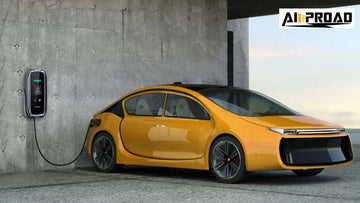
As electric vehicles become increasingly popular across Canada, home charging solutions have become a top concern for many EV owners. Charging an EV at home offers unmatched convenience and long-term cost efficiency. However, safety remains paramount, especially when dealing with high-voltage equipment and prolonged exposure to electrical currents. One common question that arises among homeowners and installers alike is whether a Ground Fault Circuit Interrupter (GFCI) circuit breaker is required for EV charging setups. The answer depends on a variety of factors, including installation type, equipment used, and local codes.
The key consideration when installing a home EV charger in Canada is understanding whether GFCI protection is required, and if so, under what circumstances. This requirement is primarily governed by the Canadian Electrical Code (CEC) along with provincial or territorial regulations. Section 86 of the Canadian Electrical Code (CEC), Part 1, outlines the rules for installing and operating electric vehicle supply equipment (EVSE), detailing standards for wiring, equipment, safety features, labeling, and disconnecting methods.
What Does the Canadian Electrical Code Say About Home EV Charger Installations?
The Canadian Electrical Code (CEC) sets nationwide standards for electrical safety, aiming to prevent electric shock and fire hazards. In the context of EV charging, it outlines requirements that ensure safe operation, particularly concerning ground faults, which can be life-threatening if not quickly addressed.
Why GFCI Protection Matters for Level 2 Charger Installations
GFCI devices are designed to detect imbalances in electrical current that may result from a ground fault. If a person or object inadvertently becomes part of the current path, a GFCI shuts off power within milliseconds, preventing serious harm. This protection becomes even more vital in environments where moisture, physical wear, or exposure to the elements is a factor, such as in outdoor EV charger setups.
For Level 2 charger installations, which operate at 240 volts and charge EVs significantly faster than Level 1 chargers, the risks are naturally higher due to the increased electrical load. As such, the CEC provides specific guidelines depending on whether the charger is hardwired or plug-in, and where the equipment is located.
Plug-In Home EV Chargers and the Need for GFCI Breakers
GFCI Requirements for NEMA 14-50 Receptacles
Plug-in EV chargers, often connected via a NEMA 14-50 outlet, like some the AMPROAD level 2 EV chargers, are common in Canadian homes. These outlets are typically installed in garages, carports, or outdoor locations. According to the CEC, any 125V or 250V receptacle located outdoors or in potentially wet locations, such as garages, requires GFCI protection. The reasoning is simple: receptacles are prone to damage, and exposure to water increases the risk of electrical faults.
In these cases, installing a GFCI breaker or using a receptacle with built-in GFCI protection is necessary to comply with code. The GFCI breaker protects the entire circuit, including the receptacle and the EV charger connected to it.
When a GFCI Breaker Is Mandatory for Plug-in Installations
If the installation involves a plug-in charger, including the portable EV charger, connected to a receptacle outdoors or inside a garage, a GFCI circuit breaker is generally required. Failure to meet this requirement may not only be a code violation but could also pose a significant safety risk.
Hardwired Level 2 EV Chargers: Do They Require GFCI Breakers?

Built-In Ground Fault Protection in EV Chargers
Many modern hardwired EV chargers come with integrated ground fault protection. The CEC recognizes this feature and may not require additional GFCI protection at the breaker in such cases. However, the presence and adequacy of this internal protection must be verified with the manufacturer and installation specifications.
Hardwiring an home EV charger directly into the electrical panel without a receptacle reduces the risk associated with plug connectors. This setup of often simplifies GFCI compliance, provided the unit’s built-in protection meets the safety standards outlined by the CEC.
Situations Where a GFCI Breaker May Still Be Required
While some hardwired chargers have sufficient internal ground fault protection, certain provinces or municipalities may still require GFCI protection at the panel level for added safety or redundancy. Local amendments to the CEC may impose stricter requirements, especially in environments exposed to moisture or public use.
How Do Provincial and Territorial Codes Influence EV Charging Safety?
Importance of Checking Local Code Variations
Although the CEC provides the foundation for electrical installations across Canada, provinces and territories often implement additional requirements or modifications. For example, British Columbia and Ontario may adopt code updates at different times or introduce localized rules tailored to regional climate conditions or safety practices.
Electricians and homeowners must consult both the national code and local amendments to ensure compliance. Ignoring regional differences could result in failed inspections or unsafe installations.
Consultation with Licensed Electricians
The only reliable way to ensure a safe and code-compliant EV charger installation is to work with a licensed electrician who is familiar with both the national and provincial codes. They can evaluate whether GFCI protection is necessary based on the charger type, location, and other environmental factors.
Does Your EV Charger Have Built-In Protection?
Understanding Manufacturer Specifications
Most Level 2 EV chargers come with built-in safety features, but not all provide full GFCI protection. Instead, many are equipped with Equipment Ground Fault Protection Devices (EGFPDs), which detect ground faults at a higher threshold than a standard GFCI. While EGFPDs meet certain electrical safety requirements, they may not be a substitute for GFCI protection as defined by the CEC.
Installers and users should review the technical documentation of the EV charger to determine what kind of ground fault protection is built in and whether it satisfies local code requirements. Some chargers explicitly state compliance with Canadian standards and the level of protection offered.
The Role of Certification Labels
Look for certification marks such as CSA, UL, or ETL on the charger. These certifications indicate that the unit has passed rigorous safety testing and meets applicable Canadian standards. They also provide guidance to electricians when determining if additional GFCI protection is needed.
Is GFCI Protection Worth It for EV Charging Safety?

Enhanced Safety in Wet or Harsh Environments
GFCI protection is especially valuable in installations subject to moisture, dirt, or extreme weather conditions. Even with built-in safety features, additional protection from a GFCI breaker can act as a crucial safeguard against unexpected faults or system malfunctions.
Balancing Cost and Risk
Adding a GFCI circuit breaker may increase the overall installation cost slightly, but it provides a strong return on investment in the form of enhanced safety and peace of mind. For installations in high-risk environments, the benefits far outweigh the additional expense.
How Often Do GFCI Requirements Change in Canada?
Impact of CEC Updates
The Canadian Electrical Code is reviewed and updated every few years to reflect advancements in technology and safety practices. As EV adoption increases, the rules around EVSE charger installation continue to evolve. What may have been permissible a few years ago might no longer meet current standards.
Importance of Staying Current
Contractors and homeowners should reference the most recent version of the CEC and consult with local authorities or inspectors. Staying current ensures compliance and helps avoid costly revisions after installation.
Summary Table: GFCI Circuit Breaker Requirements for EV Charging in Canada
|
Installation Type |
GFCI Requirement |
Notes |
|
Plug-in (Outdoor) |
Required |
Required for receptacles exposed to weather or moisture |
|
Plug-in (Garage) |
Required |
Often classified as a wet location |
|
Hardwired (No GFCI Built-In) |
Required |
Panel-mounted GFCI breaker needed if charger lacks internal protection |
|
Hardwired (GFCI Built-In) |
May Not Be Required |
Verify manufacturer specs and local code |
|
Indoor, Dry Environment |
Varies by Province/Territory |
Some regions may relax GFCI needs based on environment |
GFCI Circuit Breakers for EV Charging in Canada
EV charger installation is not a one-size-fits-all scenario. The requirement for a GFCI circuit breaker is influenced by multiple factors, including the installation method, charger design, and location-specific code interpretations. While plug-in chargers almost always require GFCI protection, hardwired chargers with built-in safeguards might not, depending on the jurisdiction and the equipment’s certification.
Ultimately, the safest and most compliant approach is to engage a licensed electrician who understands both the national and local codes. Whether it’s a Level 2 home EV charger in a private garage or an outdoor unit mounted near a driveway, ensuring proper GFCI protection is essential to protecting both people and property from electrical hazards.


